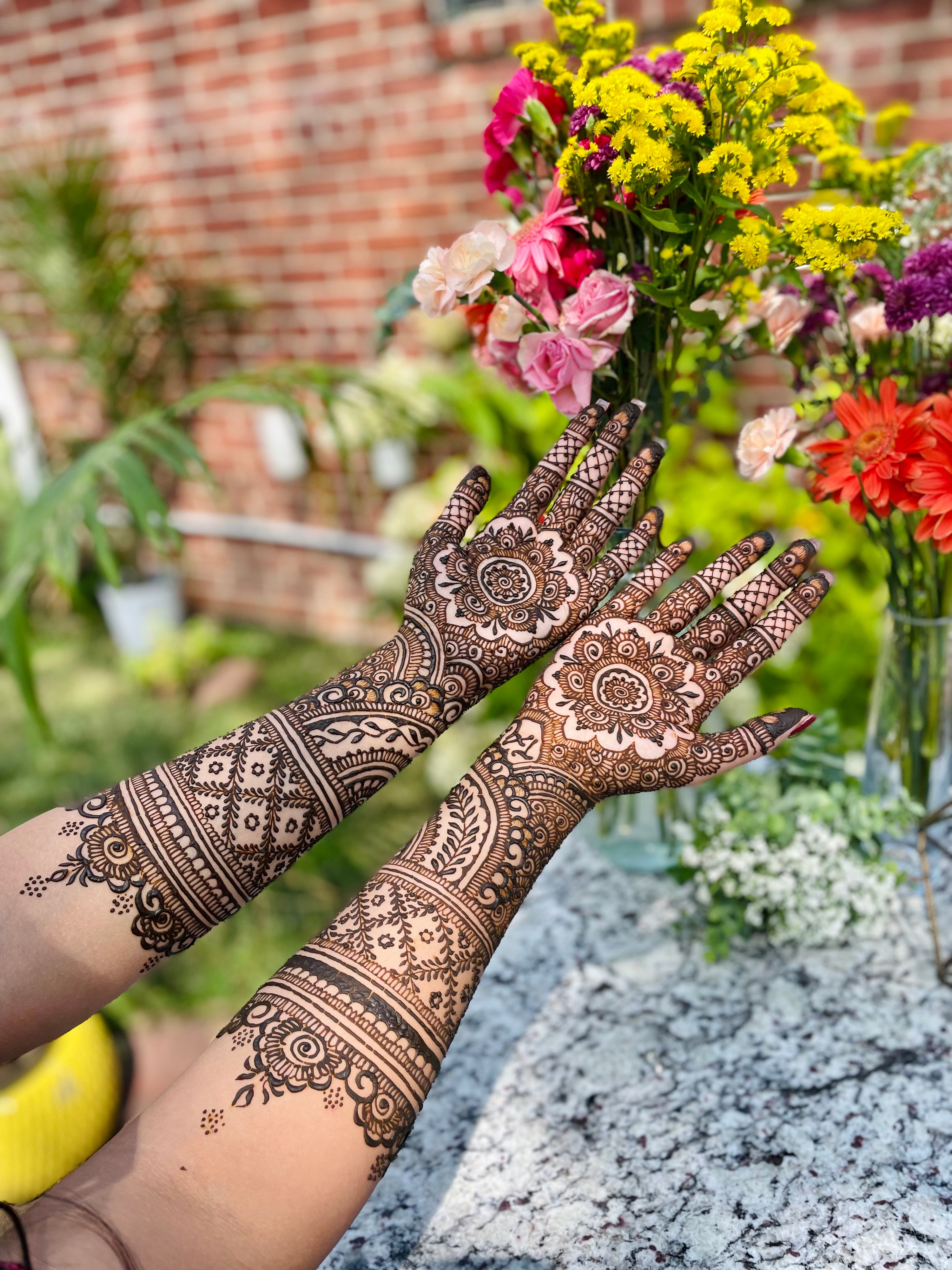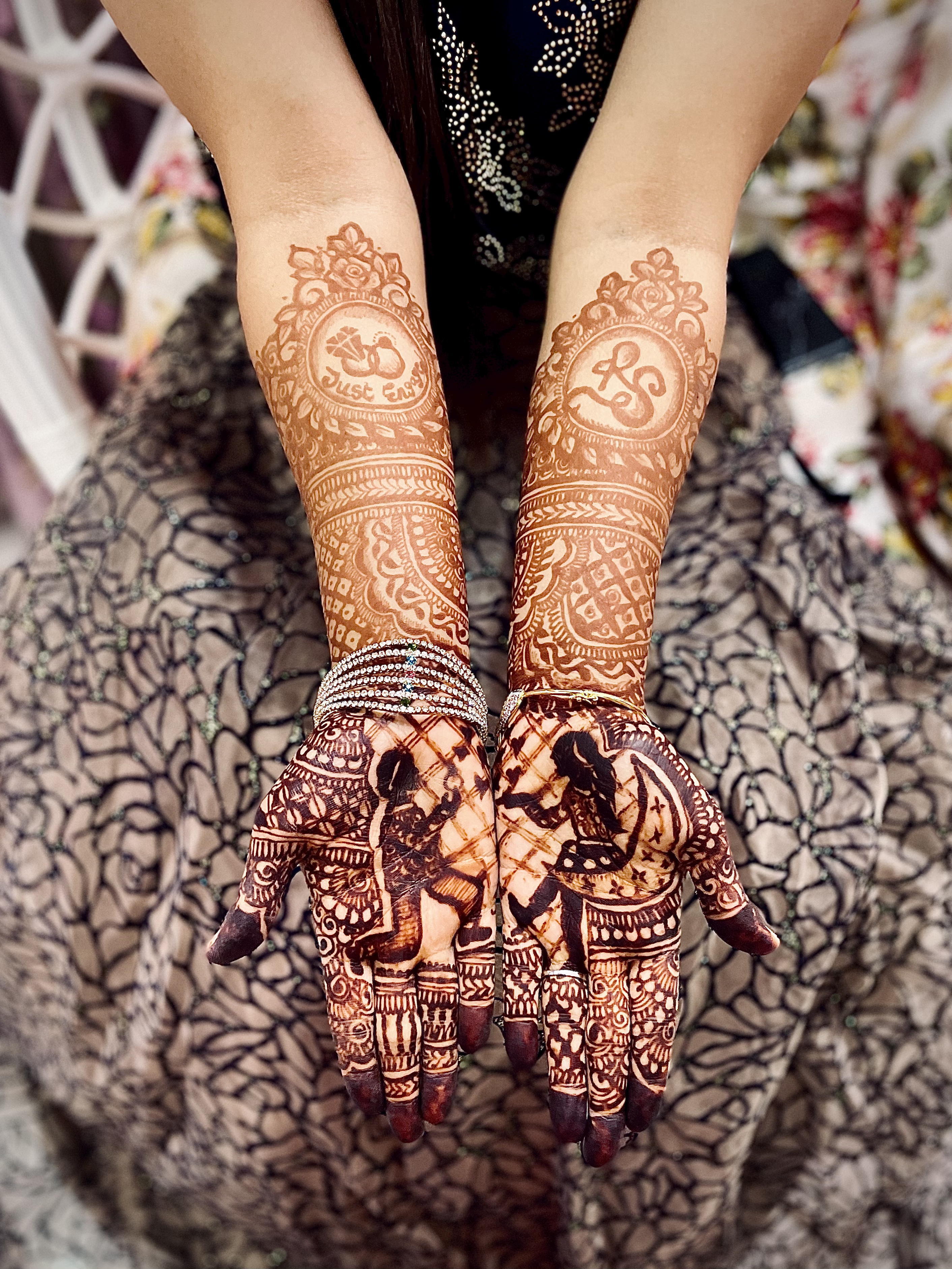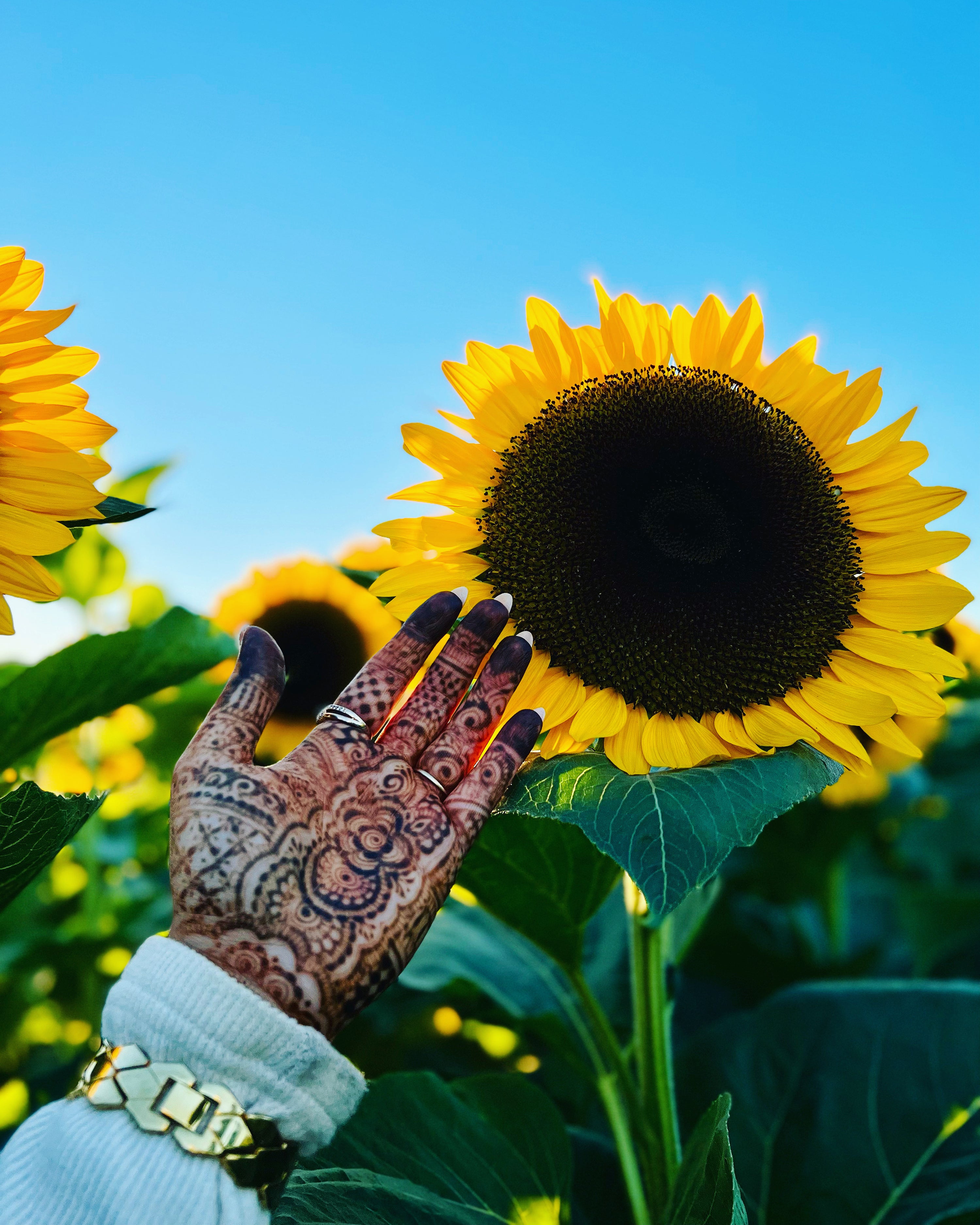About Henna
Henna, also known as Mehndi, is the oldest form of body art. The henna powder is derived from crushing leaves of henna plants grown in Asia and the Middle East. Henna paste was first being used, some 9000 years ago, as a cooling agent in hot weather, and it is also believed to have some medical properties of healing burns, bruises and headaches. It was also used as a form of nail polish!
Apart from its dyeing properties, the constant use of henna softens and strengthens hair and adds shine to it. It also acts as a natural remedy for hair loss. With its amazing ability to retain the pH balance of the scalp, henna naturally and effectively cures dryness, dandruff as well as premature graying of hair.
This ancient form of art to adore the hands, feet, and arms now includes thousands of designs, including floral, geometric, and paisley patterns. Today henna is filled in cone shaped tubes for creating intricate designs by thousands of talented artists around the globe.
Henna designs are not tattoos—a tattoo is permanent as ink pierces the skin, while henna is a temporary dye which sits on the skin’s surface for 1-3 weeks. Henna symbolizes love, happiness, good health and prosperity. It is now mainly used in celebrating special occasions and joyous gatherings like weddings, birthday parties, bridal showers, baby showers, religious events, etc. In asian culture it is also believed that the darker the henna stain, the deeper the love between two individuals. Many traditional henna designs are secret symbols of prosperity, love, loyalty, fertility and good luck.
Bridal Henna












#StainGoals









Party Henna









Jagua Tattoos



Body Art



Face Painting



